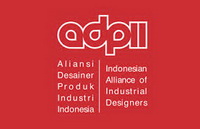Pengembangan desain produk berbahan baku limbah kerang di Bantul
Abstract
The problem that is often faced for small and medium industries is the limited capital they have. They feel unable to hire designers to produce innovative products. They also often objected to allocating funds to conduct design experiments that required a lot of funds that they found to be highly speculative. Many small and medium industries that are comfortable with their conditions, accept orders whose designs come from direct buyers. They only become producers who often have low bargaining positions in the presence of buyers. The price of production is even determined by non-producer buyers. As a result, despite the large number of orders, the welfare of business actors and employees is difficult to improve. UMKM Development Activities This art is done to overcome these obstacles. Pembina who is a lecturer in Product Design Study Program ISI Yogyakarta has the competence to carry out the product innovation development activities. Through a more collaborative activities between lecturers and business actors, some design products produced from clam waste, some of which are made of prototype. With these activities, it is expected that business actors are motivated to continuously make design innovations on the products it produces. Collaboration, for lecturers also have a positive impact, namely the development of insight into the material and engineering workmanship in the field which in turn can be used as learning materials on campus.
Keywords: waste, clame, product design
Full Text:
PDFReferences
Ambrose, G., & Harris, P. (2010). Design Thinking. Lausanne: AVA Publishing SA.
Ching, F. D. (1996). Ilustrasi Desain Interior. Jakarta: Penerbit Erlangga.
Giyanto, A. (2014). Panjang Pantai 110 Kilometer, DIY Potensial Kembangkan Produksi Garam. Jurnal Maritim Online, (Desember). Retrieved from http://jurnalmaritim.com/2014/12/panjang-pantai-110-kilometer-diy-potensial-kembangkan-produksi-garam/
Hariyadi, S., Asyiah, I. N., & Fatahillah, A. (2013). Pelatihan desain kerajinan kerang pada pengrajin kerang di Kabupaten Situbondo. Jember: Universitas Jember, Tidak Diterbitkan.
Hastuti, L. S. S., Arifin, A., & Subagya. (2011). Pengembangan Desain Produk Seni Kerajinan Kerang Simping. Dinamika Kerajinan Dan Batik, 29(Juni), 37–42.
Prasetya, J. D. (2010). Potensi Kerang Simping di Kabupaten Brebes Jawa Tengah. In Prosiding Seminar Nasional Hasil Perikanan dan Kelautan Jurusan Perikanan Fakultas Pertanian Universitas Gajahmada 2010.
Pratama, I. M. D., & Bendesa, I. K. . (2015). Analisis Faktor–Faktor yang Mempengaruhi Nilai Ekspor Kerajinan Kerang di Provinsi Bali. Jurnal Ekonomi Pembangunan Universitas Udayana, 4(4), 313–325.
Pratama, M. Y., & Mutmainah, S. (2015). Nilai Estetika Kerajinan Cangkang Kerang UD. Baru Senang (Halik Mawardi), Panarukan, Situbondo. Jurnal Pendidikan Seni Rupa, 3(1), 11–19.
Sari, E. D. T., Rismana, A. D., Suseno, Tyas, C. A., & Lailassalami, U. (2013). Program Kreativitas Mahasiswa Pemanfaatan Kerang Laut untuk Usaha Souvenir. Semarang: Fakultas Ilmu Komputer, Universitas Dian Nuswatoro, Tidak diterbitkan.
DOI: https://doi.org/10.24821/productum.v3i1.1736
Refbacks
- There are currently no refbacks.
p-ISSN 2477-7900 | e-ISSN 2579-7328

This work is licensed under a Creative Commons Attribution 4.0 International License.
Like & Follow Us











